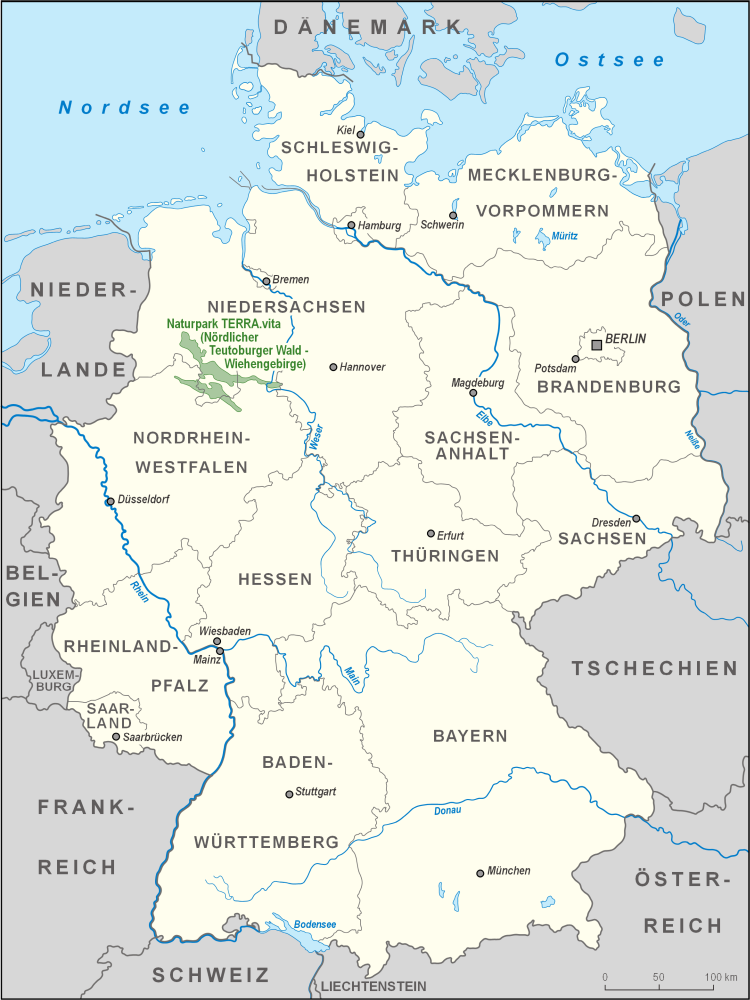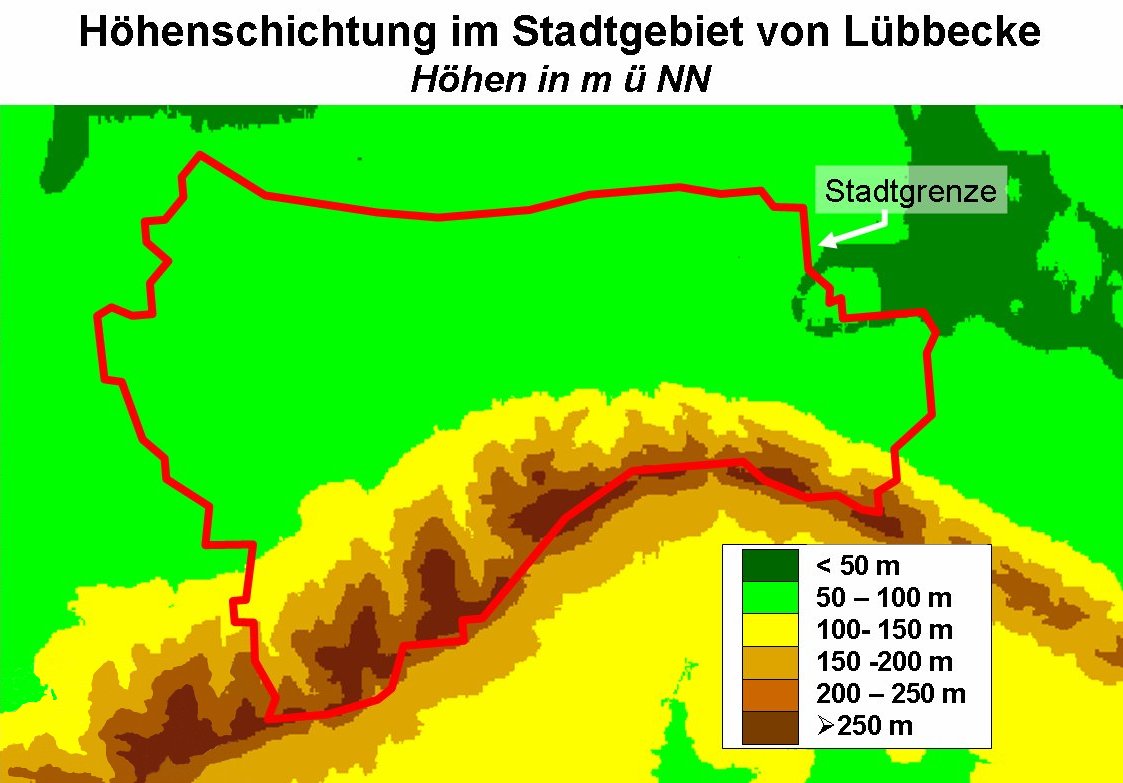|
TERRA.vita
The TERRA.vita Nature Park (german: Naturpark TERRA.vita) is located in the German states of Lower Saxony and North Rhine-Westphalia and is divided into northern and southern areas. The park is also known as the ''Osnabrück Land Nature Park'' and sometimes by its old name of ''North Teutoburg Forest-Wiehen Hills Nature Park''. The woodlands of the Nature Park comprise about 70% of its total area.Sehere/ref> The Nature Park Northern area The northern part of the nature park begins in the Emsland near Herzlake and extends from there over the southern fringes of the Oldenburger Münsterland and Osnabrück Land in a southeast direction over the Ankum Heights to Bramsche. From there it widens out north of Osnabrück over the Wiehen Hills eastwards and then over the gorge of Porta Westfalica, continuing further to the east as far as the Bückeburg, which lies east of the Weser and north of the Wesergebirge; the park area thus extends into the northwestern part of the Wesergebir ... [...More Info...] [...Related Items...] OR: [Wikipedia] [Google] [Baidu] |
Wesergebirge
The Weser Hills (''Wesergebirge''), also known in German as the ''Weserkette'' ("Weser Chain"),"Ein anderes Bild als die Bergländer der oberen Weser bieten die ''Weserkette'', das ''Wiehengebirge'' und der ''Teutoburger Wald'', see Christian Degn, et al. (ed.) Seydlitz, 1st Part, ''das deutsche Vaterland, wir und die Welt'', 7th ed., Kiel, Hanover, 1954, p. 50 form a low hill chain, up to , in the Weser Uplands in the German states of North Rhine-Westphalia and Lower Saxony. The thickly wooded Weser ridge is one of the northern outliers of the German Central Uplands on the southern edge of the North German Plain and forms part of the TERRA.vita Nature Park in the west and Weser Uplands Schaumburg-Hameln Nature Park in the east. The Weser Hills are widely known because of Schaumburg Castle which stands on the Nesselberg (c. ) in the Schaumburg district of the town of Rinteln, and is the emblem of Schaumburg Land. Geography The Weser Hills cross the counties of Minden-Lübbe ... [...More Info...] [...Related Items...] OR: [Wikipedia] [Google] [Baidu] |
Osnabrück Land
Osnabrück Land (german: Osnabrücker Land) is a region in southwest Lower Saxony in Germany, which extends into the state of North Rhine-Westphalia. Its centre is the city of Osnabrück. The region is dominated by the Teutoburg Forest and the River Hase. Originally a variant of Low German was spoken here which belonged to the East-Westphalian dialect. The region is generally identified with the district and city of Osnabrück, which largely corresponds to the Prince-Bishopric of Osnabrück in the Holy Roman Empire. The Osnabrück Land Regional Association (''Landschaftsverband Osnabrücker Land'') looks after cultural issues for the region. Location The southern part of Osnabrück Land borders on Münsterland in the state of North Rhine-Westphalia. To the west the Tecklenburg Land is the natural continuation of the Osnabrück Land into North Rhine-Westphalia. To the southeast is the Ravensberg Land. Most of Osnabrück Land borders on other Lower Saxon regions: to the west o ... [...More Info...] [...Related Items...] OR: [Wikipedia] [Google] [Baidu] |
Teutoburg Forest
The Teutoburg Forest ( ; german: Teutoburger Wald ) is a range of low, forested hills in the German states of Lower Saxony and North Rhine-Westphalia. Until the 17th century, the official name of the hill ridge was Osning. It was first renamed the ''Teutoburg Forest'' in 1616 in commemoration of the Battle of the Teutoburg Forest in 9 AD, which most likely took place at Kalkriese instead. Geography The Teutoburg Forest is a peripheral section in the north of the German Central Uplands, and forms a long narrow range of hills (comprising three ridges) extending from the eastern surroundings of Paderborn in the south to the western surroundings of Osnabrück in the northwest. South of the city centre of Bielefeld, a gap called the Bielefeld Pass bisects the range into the ''Northern Teutoburg Forest'' (two thirds) and ''Southern Teutoburg Forest'' (one third). In addition, the northeastern and southwestern ridges are cut by the exits of the longitudinal valleys between the ridges. ... [...More Info...] [...Related Items...] OR: [Wikipedia] [Google] [Baidu] |
List Of Nature Parks In Germany
Nature parks in Germany (german: Naturparks) have been established under section 22, paragraph 4 of that country's Federal Nature Conservation Act (BNatSchG). there were 103 nature parks, comprising about 27 percent of the total land area of Germany and are brought together under the Association of German Nature Parks. In total there are 23,159 Protected Areas in Germany. Parks that overlap into neighbouring countries are led by Europarc. The oldest nature park is Lüneburg Heath Nature Park, whose core area was established in 1921 as a nature reserve; by 2007, it had expanded to more than four times its original area. the largest nature reserve in Germany, with , is the Southern Black Forest Nature Park. The surface area of nature parks in Germany increased by 42% between 1998 and the end of 2019 (this corresponds to around 3.0 million hectares). The 16 national parks of Germany, under paragraph 24 of the Federal Nature Conservation Act, are not listed here. ''See List of ... [...More Info...] [...Related Items...] OR: [Wikipedia] [Google] [Baidu] |
Lübbecke
Lübbecke (; wep, Lübke) is a town in northeast North Rhine-Westphalia in north Germany. This former county town lies on the northern slopes of the Wiehen Hills (''Wiehengebirge'') and has around 26,000 inhabitants. The town is part of district of Minden-Lübbecke within the ''Regierungsbezirk'' of Detmold in the Ostwestfalen-Lippe region. Lübbecke was first mentioned in the records in 775 as ''hlidbeki'' and was given town rights in 1279. Geography Lübbecke is situated just north of the Wiehen Hills, approx. north of Herford and west of Minden. Location Lübbecke is located in northeast North Rhine-Westphalia, north of East Westphalia-Lippe (''Ostwestfalen-Lippe''), in the southwestern part of the district of Minden-Lübbecke. From a landscape perspective, the town lies in the west of the Minden Land. Geographically, most of the built-up area is on the North German Plain. Only its southern suburbs lie on the northern slope of the Wiehen Hills, whose crest that marks t ... [...More Info...] [...Related Items...] OR: [Wikipedia] [Google] [Baidu] |
Lower Saxony
Lower Saxony (german: Niedersachsen ; nds, Neddersassen; stq, Läichsaksen) is a German state (') in northwestern Germany. It is the second-largest state by land area, with , and fourth-largest in population (8 million in 2021) among the 16 ' federated as the Federal Republic of Germany. In rural areas, Northern Low Saxon and Saterland Frisian are still spoken, albeit in declining numbers. Lower Saxony borders on (from north and clockwise) the North Sea, the states of Schleswig-Holstein, Hamburg, , Brandenburg, Saxony-Anhalt, Thuringia, Hesse and North Rhine-Westphalia, and the Netherlands. Furthermore, the state of Bremen forms two enclaves within Lower Saxony, one being the city of Bremen, the other its seaport, Bremerhaven (which is a semi-enclave, as it has a coastline). Lower Saxony thus borders more neighbours than any other single '. The state's largest cities are state capital Hanover, Braunschweig (Brunswick), Lüneburg, Osnabrück, Oldenburg, Hildesheim, Salzgitt ... [...More Info...] [...Related Items...] OR: [Wikipedia] [Google] [Baidu] |
Nature Parks In North Rhine-Westphalia
Nature, in the broadest sense, is the physical world or universe. "Nature" can refer to the phenomena of the physical world, and also to life in general. The study of nature is a large, if not the only, part of science. Although humans are part of nature, human activity is often understood as a separate category from other natural phenomena. The word ''nature'' is borrowed from the Old French ''nature'' and is derived from the Latin word ''natura'', or "essential qualities, innate disposition", and in ancient times, literally meant "birth". In ancient philosophy, ''natura'' is mostly used as the Latin translation of the Greek word ''physis'' (φύσις), which originally related to the intrinsic characteristics of plants, animals, and other features of the world to develop of their own accord. The concept of nature as a whole, the physical universe, is one of several expansions of the original notion; it began with certain core applications of the word φύσις by pre-Socr ... [...More Info...] [...Related Items...] OR: [Wikipedia] [Google] [Baidu] |



.jpg)



.jpg)